Vol. 10, Issue 2, pp: (57-76), Month: October 2022 - March 2023, Available at: www.researchpublish.com
Teenagers’ Diary: A Young Woman’s Portrait towards Struggle, Hope, and Success to Womanhood Basis for Proposed Health Program
1Jed Avenido, 2Jellie Monton, 3Dezairyl Kate Nankil, 4Jc Pauline Pabustan, 5Jane-Vi Taruc
Co-Author: Amparo T. Miguel, PhD, MAN, RN
College of Nursing, Mary Chiles College, Manila City, Philippines
DOI: https://doi.org/10.5281/zenodo.7254585
Published Date: 26-October-2022
Abstract: In the Philippines, there are 7,255 live births on average per day (Philippine Statistic Authority, 2020). With this number of pregnancies, some were identified to be young at age. It was stated fromthe latest Civil Registry and vital statistics for 2019 (Philippines Statistical Office) that births among adolescent girls aged 10-19 years old remained high in the country.
This study aims to discuss the journey of a young woman's struggle, hope, and success as a teenage pregnant woman to womanhood through the photovoice method and sought to know how pregnant teenagers relate the picture to their situation? It specifically aims to know what challenges more likely a pregnant teenager faces, the struggle, hope, or success to womanhood? How do these challenges help with their pregnancy?
The study utilized the Roy Adaptation Model by Sister Callista Roy which focused on the interconnected, holistic individual and her interaction with the environment. The study focused on a young woman’s journey towards struggle, hope, and success in womanhood among pregnant teenagers. The respondents of the study were four (4) pregnant teenagers. Their ages ranged from 13 to 19 years old and they were at least 20 to 35 weeks pregnant. They came all from Sta. Rosa, Laguna. The study utilized qualitative research with the method of photovoice. Photovoice is defined by its creators Wang and Burris 1997 as a "process by which people can identify, represent, enhance their community through a specific photographic technique". Wang and Burris 1997, p.369)
The findings of this paper suggest that we should have a support system in both private and public sectors for all teenage pregnant women. This study, therefore, concludes Photovoice methods play a significant role in teenage pregnant participants sharing their experiences and were able to show the statement of the problem by the negative and positive effects of being a teenager the respondents. It serves as an aid to address the psychological impact of teenage pregnancy as they are able to share experiences and get motivated by the current status of respondents.
Keywords: Photovoice, Teenage pregnant, Struggle, Hope, Success, Womanhood.
I. THE PROBLEM AND ITS BACKGROUND
This chapter discussed the overview of the research. This includes the introduction, background of the study, significance ofthe study,orientation,andthe methodthattheresearchers used.Itindicates somebriefinformationregardingtheresearch, the participants and its qualification. Furthermore, it discusses the objectives and the theoretical framework.
Introduction
One of the important episodes of being a woman is being pregnant. Pregnancy is a special blessing that comes from God in any aspect. In the Philippines, there are 7,255 live births on average per day (Philippine Statistic Authority, 2020). With
International Journal of Healthcare Sciences ISSN 2348-5728 (Online)
Vol. 10, Issue 2, pp: (57-76), Month: October 2022 - March 2023, Available at: www.researchpublish.com
this number pregnancy, some were identified to be young at age. It was stated from the latest Civil Registry and vital statistics for 2019 (Philippines Statistical Office) that births among adolescent girls aged 10-19 years old remained high in the country. In which region IV-A (CALABARZON) is noted to have live births of 23,383 from teenage women making the region to have the highest in teenage pregnancy rate nationwide.
According to anatomy and physiology, a woman should conceive approximately from age 25 to 30 (Videbeck, 2018). Today, this age has been altered and the number of teenage pregnancies starts to rise. Pregnancy comes with preparation such as physical, mental, emotional, and spiritual being. But in the case of teenage pregnancy, they experience the process of bearing a child at an early age. At times they are not holistically prepared, nevertheless, they tried to cope up and hoping to be the best nor the ideal parent for their child and family.
It has been argued that the tendency to approach teenage pregnancy as a social problem has led to an exaggeration of negative outcomes and resulted in the positive aspect of teenage motherhood being ignored. However, it was contradicted duringthecelebrationofMother’sDay2021,the CommissiononPopulationandDevelopment(POPCOM)intheirprogram “USAP tayo sa Family Planning mga Kwento sa Likod ng mga Batang Ina” wherein Senator Pangilinan, said “Mahirap maging isang magulang pero mahirap din ang maging isang batang ina” which was also seconded by Mayor Debuque, “Teenage pregnancy is both a social and health problem. It takes a village to raise a child”.
Since it has been a challenge for a woman to raise her child, Antenatal Care (ANC) Program was provided nationally. This is an umbrella term used to describe the medical procedures and care that are carried out during pregnancy to ensure a healthy pregnancy state and safe childbirth (Thembelihle, 2018). As teenagers face many physical, psychological, social and spiritual challenges, a constant need for support and training is very important. Some of the problems encountered with teenage pregnancy are the inability to plan and decision making, lack of maternal care. Many studies and literature oftenly impact the negative impacts during teenage pregnancy, however the researchers looked on the other side of the coin and to see the special moments of the teenage woman as she carried her future offspring. Researchers launched this study entitled “Teenagers’ Diary: A Young Woman’s Portrait Towards Struggle, Hope, and Success to Womanhood”, as we sought to discuss teenage mothers' experiences and antenatal journey using Photovoice approach.
Background
Practices for care of the pregnant mother holistically is essential. To meet this, criteria was set by the health department to ensure that the pregnancy is safe and enjoyed by mothers thus providing a beautiful and bountiful experience. Technically, women could have got pregnant and bear children from puberty when they start getting their menstrual period ages 12 to 51 (Watson, 2018) as age is one of the single biggest factors affecting a woman's chance to conceive and have a healthy baby.
According to Health Direct (n.d.), preparing to have a baby come into your life is an exciting time but also a challenging one. It’s normal to have some worries and fears about what’s coming when you’re pregnant. Manypeople feel quite stressed at this time, particularly when they know it's a big change that theycan’t fullyprepare for or control, especiallyas a teenager pregnant. Dealing with pregnancy at a young age might be stressful. Hormonal and physical changes are also experienced by young pregnant women which could lead to some mental health issues during pregnancy. Some of which may progress to depression, anxiety, and bipolar disorder which is less common.
Due to these possibilities, it is important that the teenage pregnancy is prepared physically, emotionally and spiritually. Sincethis willrepresentthreedimensionsofwellbeingsuch asemotion,behavior,andperceptionofone'srelationtooneself, others, nature, and a higher entity. Spiritual well-being, life satisfaction, purposefulness, happiness, respect, positive attitude, inner peace, and integrated identity in one's own interaction in both ways to maintain health-related quality of life as they bear their child (Baglooei, Mafi, Niaghiha, & Taherpour, 2019).
Complications such as pregnancy-related high blood pressure (preeclampsia), anemia, miscarriage, infections and preterm labor gives higher risks among teenage pregnant. Risks for the baby included premature birth and low birth weight. Preeclampsia could also harm the kidneys or even be fatal for mother or baby (Carey & Schulman, 2018).
Due to some unexpected situation, they raised a child in their womb untimely, it caused them to experience various life changing events, which made their life experiences meaningful and colorful. Events such as prenatal visits, identifying fetal sex, anticipation of expected date of delivery and others may have significance to every individual in the importance of life, care, and motherhood.
International Journal of Healthcare Sciences ISSN 2348-5728 (Online)
Vol. 10, Issue 2, pp: (57-76), Month: October 2022 - March 2023, Available at: www.researchpublish.com
This study is conducted due to its relevance to help teenage pregnant to speak out and share their journey during teenage pregnancy and to address and improve various health programs and linkages of both government and private institutions. The researchers also chose this topic that can help them to have a wider and broader thinking about pregnancy at a young age. As it becomes more meaningful, the researchers explain the antenatal experiences of a teenage mother with the use of qualitative study in a form of photovoice, with this method the participants were able to share their thoughts or perspective by simply capturing photos and explaining the story behind that photo to the researchers.
Statement of the Problem
Grand Tour Question:
1. How do pregnant teenagers relate the picture with their situation?
2. What challenges more likely a pregnant teenager faces, the struggle, the hope or the success?
3. How do these challenges help you with your pregnancy?
Theoretical Framework
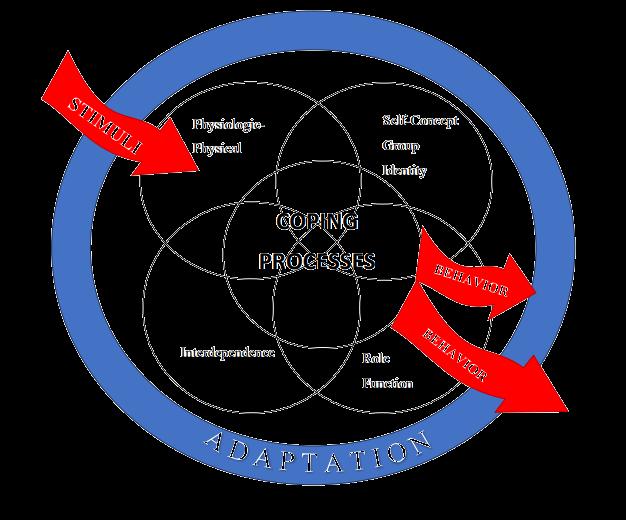
The studyutilized the RoyAdaptationModel bySister Callista Roywhichfocused onthe interconnected, holistic individual and his/her interaction with the environment. In her model an individual receives a stimulus and the normal body response is to cope up with the stimuli elicited thus, adaptation reactions are observed as the individual manages to control the stimulus. In situations like teenage pregnancy a young woman was obliged to change her age-related activities responsibilities due to impending parenthood. Thus, adjustment might affect her well-being and coping with this situation is essential.
Roy’s Adaptation Model 4 adaptive modes such as physiologic, self-concept, role function and interdependence modes.: Physiologic mode refers to the basic physiological needs of an individual During pregnancy a teenage woman requires an increased body requirement for nutrition as well as activity, rest and protection. Meeting these basic needs will help their bodyfunctionoptimallyas theyface the realityof beingpregnant at an earlyage. Self-concept mode consists ofthe physical self and personal identity. Personal identity is formed by their thoughts, moral-ethics and spirituality. Teenagers adapt to the perception that there will be body changes, this will affect how she sees herself as a physical being. Role Function mode covering the individual’s role in society for social integrity. Teenagers cope up during pregnancy with the role of a mother at an early age. While Interdependence mode includes relationships with others that are meaningful to the person, and support systems. A teenage pregnancy may require additional care of the support systems such as parents and immediate family members during pregnancy as she undergoes transitions to her journey to womanhood.
This theory is suitable with the study as the research talks about the experiences of a teenager during pregnancy. Adapting to changes from a teen to a future mother gives the participant the opportunity to show their stories as they walk the life of becoming a teenage mom. This focuses on teenage pregnancy as the researchers correlate that the stimuli in this study was
International Journal of Healthcare Sciences ISSN 2348-5728 (Online)
Vol. 10, Issue 2, pp: (57-76), Month: October 2022 - March 2023, Available at: www.researchpublish.com
the teenager getting pregnant. From here, we can see examples of the physiologic changes, the self-concept identity, the moment of interdependence interconnected to the coping process of the teenager into her pregnancy. It will then result in behaviours of the teenagers into their journey to womanhood. The researchers know that they need special care as they are considered as high-risk groups in pregnancies and wanted to learn how most teenagers cope up or adapt to their pregnancy. What are their struggles, hopes & success as they undergo the transition from being teen to a mother.
In addition, this study also utilized the Health Promotion Model which was developed by Dr. Nola Pender that is used universally for research, education, and practice. The health promotion model focuses on helping people achieve higher levels of well-being. It encourages health professionals to provide positive resources to help patients achieve behaviour specific changes. The goal of the HPM is not just about helping patients prevent illness through their behaviour, but to look at ways in which a person can pursue better health or ideal health.

According to Pender, the HPM makes four assumptions: First, individuals strive to control their own behaviour. Second, individuals work to improve themselves and their environment. Third, health professionals, such as nurses and doctors, comprise the interpersonal environment, which influences individual behaviours. Lastly, self-initiated change of individual and environmental characteristics is essential to changing behaviour.
Theresearchersutilizedthistheoryas well because Pender’s HealthPromotionModelisoneofthe most widelyused models to identify and change unhealthy behaviours and promote health. The researchers are aware that transition to motherhood needs physical, psychological, social and cognitive preparedness; but teenage mothers are not yet readyto become a mother because of many factors. With this study, the researchers have an opportunity to get a first-hand experience to know in depth about the pregnant teenagers: individual characteristics and experiences, actions, specific cognitions and affect and lastly, their behavioural outcome during their journey as a teenage pregnant.
Scope and Limitations
To clearly provide boundaries in the study researcher formulated the scope and limitations for this project. It focused on first pregnancy, which is primigravida during teenage women specifically in the age group of 13-19 years old who were residing at Laguna.
The subjects had been drawn who were in their teenage years of Laguna health station or rural health units. Respondents whose age were beyond the teenage years are not included in this research. Moreover, information regarding the husband of the teenager and others had not been used as a part of the studies since the only focus of this was the experiences of teenage pregnancy. The studies had covered the school year 2020-2021 of first and second semester.
International Journal of Healthcare Sciences ISSN 2348-5728 (Online)
Vol. 10, Issue 2, pp: (57-76), Month: October 2022 - March 2023, Available at: www.researchpublish.com
Since the researcher was considered a novice, researchers are required to read articles, books, journals, that would clearly explain the process of photovoice. Furthermore, they seek assistance with the guidance of experts such as psychologists from the original prenatal program of DOH.
Significance of the Study
This study had been undertaken to find out what are the thoughts of a teenage mother using the photovoice method.
Benefitting the study are the various sectors as follows:
Teenage pregnant/ Respondents
This study will help the future mothers with their pregnancy worries, fears and stress. Having a baby change everything and it's very common to get worried about the future. This will benefit them as they can see a glimpse of pregnancy on what to expect and do’s and don'ts of teenage pregnancy.
Parents of pregnant teenager
This study will help them realize that the important thing is that their daughter needs their support more than ever, as they are the one who will be at their side to guide them during their daughter’s journey during teenage pregnancy.
Doctors, Nurses and Midwives
As they represent the entire healthcare team who will provide holistic care and necessary health management in which they will address the vulnerability of teenage pregnancy. Since they are enhanced with improved and up to date knowledge and skills in giving quality care especially in pregnant teenagers. It will give information and awareness of what a teenage pregnant is experiencing, suffering and the care they need.
Department of Health
As they represent the government as an agency who has the responsibility to ensure that teenage pregnancy and other pregnant women age groups must have access to the highest attainable standard of health services. This study will give them the opportunity to enhance the DOH program to cater the sensitivity of teenage pregnancy.
Guidance counsellor
This study helps counsellors to enhance their knowledge and awareness on how to handle, advise, and address the concerns ofteenagers intheir situation. It also gave theminformationthat can improve their skills in a waythat theyeasilyrecognized what help or advice the pregnant teenager needs.
Mary Chiles
This study will give information and awareness to the school staff, professors, students, and others who work here about the real experiences and situation of a pregnant teenager that they might encounter inside the facilities.
Future Researchers
This study may help the future researchers to improve them on how to use photovoice methods in assessing the experiences of teenagers during the whole pregnancy and influence on participants’ empowerment changes and how to sustain these individual and social changes.
Definition of Terms
The following terms are defined operationally for better understanding of the content of the study.
A Young Woman’s Portrait - this refers to the pictures that were described by the respondents which serves as reflection of the participants' possible struggle, hope, and success while undergoing teenage pregnancy.
Hope - this refers to a feeling of expectation and desire felt by the respondents during their pregnancyjourney, wherein they expected and awaited the arrival of their baby.
Photovoice method - is the process that researchers used to communicate with their respondents through the use of the Facebook/Messenger platform. This procedure is where the respondents will send photos that they can relate to their situation, and they will explain how it is related to their status.
Struggle - this indicates the difficulty or problem dealt by the respondents, in which they experienced mental and emotional strain during their pregnancy.
International Journal of Healthcare Sciences ISSN 2348-5728 (Online)
Vol. 10, Issue 2, pp: (57-76), Month: October 2022 - March 2023, Available at: www.researchpublish.com
Success - this pertains to the respondent’s achievement of desired vision, aspiration, and possible outcome which they may encounter in the near future.
Teenage Diary - served as respondents’ reflection during the entire process of the study while utilizing the photovoice method in exploring the respondents’ struggle, hope, and success in their journey to teenage pregnancy.
Teenage pregnant - teenage pregnant refers to the respondents of the researcher who will be the main part of this study. Pregnancy in a female aged 13 to 19 years old is referred to as adolescent pregnancy.
Womanhood - refers as to how the respondents were characterized with regards to the set of qualities. Namely: hopeful, strong, responsible, loving, caring traditionally considered appropriate for or characteristic of women. According to the following age group: Theyare around thirteen (13) to nineteen (19); and at least twenty (20) weeks to thirty-five (35) weeks pregnant, and molding themselves to be a responsible young woman for their betterment.
Synthesis of Literature
The Roy Adaptation Model by Sister Callista Roy is suitable with the study as the adaptation to changes from a teen to a future mother can be seen as a perfect example of how a person can change or adapt based on certain factors. From here, we can see examples of the physiologic changes, the self-concept identity, the moment of interdependence interconnected to the coping process of the teenager into her pregnancy. It will then result in behaviors of the teenagers into their journey to womanhood and learn how most teenagers cope up or adapt to their pregnancy. (Petripin,2020). Another theory was according to Pender, the Health Promotion Model which makes four assumptions as individuals strive to control their own behavior, they work to improve themselves and their environment and health professionals, such as nurses and doctors, comprise the interpersonal environment, which influences individual behaviors. Lastly, self-initiated change of individual and environmental characteristics is essential to changing behavior. Its purpose is to help nurses know and understand the major determinants of health behaviors as a foundation for behavioral counseling to promote well-being and healthy lifestyles. The transition to motherhood needs physical, psychological, social and cognitive preparedness; but teenage pregnant are not yet readyto become a mother because of manyfactors. With this study, the researchers have anopportunity to get a firsthand experience to know in depth about the pregnant teenagers: individual characteristics and experiences, behavior specific cognitions and affect and their behavioral outcome during their journey as a teenage pregnant.
Earlypregnancyis one ofthe pressingissues Filipino youths are facingtoday. The Philippines has one ofthe highest teenage pregnancy rates among the ASEAN member states despite the decrease of total live births of teenage mothers (aged 10-19) in 2016 (203,085) to 183,000 in 2019. According to the Commission on Population and Development (PopCom), the Philippines has recorded a 7% increase in births among girls aged 15 and below in 2019. Filipino minors who gave birth in 2019 increased to 62,510 from 62,341 in 2018. In 2019, 2,411 very young adolescents aged 10 to 14 gave birth, or almost seven every day (Zorilla, 2021).
Teenage pregnancy is mostly unplanned, and as a result, people react to the experience differently. The adolescent must deal with the unanticipated expectations of adulthood, as well as the rejection and disappointment shown by significant persons such as parents and relatives in some circumstances. Teenage pregnancy is a very serious problem because this situation takes the teenager from interruption of schooling, less idea of how hard to be a parent, poor child outcomes, disappointment and judgment fromrelatives, difficulties with partners, and the peer fromother people’s opinions. And also, when a teenager has a kid, she is more likely to confront crucial interpersonal concerns such as poverty, inadequate education, dangerous behaviors that result in poor health, and child welfare. This is exacerbated for young mothers and studies have shown that adolescent mothers experience an increased burden of responsibility during the transition to motherhood (Erfina and Widyawati, 2019).
Cultural groups can differ in many ways, including language, values, music, food preferences and religion. Some of these factors can influence the rates of teenage pregnancy, and the decision to terminate the pregnancy or have the baby (Oz, 2017). Socialization is also a consideration. He defines socialization as the process by which humans learn their society's culture and mature into adult members of that society. It teaches humans how-to live-in society and what is considered suitable behavior in various settings (Gopez, n.d.)
Contrary to the predominantly negative effects of adolescent pregnancy most often reported in the literature, many of the pregnant and parenting adolescents reported increased motivations for school and career post-birth as well as other positive effects such as better self-esteem, being proud of their accomplishments, and earning more respect from family members (Bute, et. al., 2015). Many young mothers felt they were stronger and more competent. Adolescent pregnancy brought
International Journal of Healthcare Sciences ISSN 2348-5728 (Online)
Vol. 10, Issue 2, pp: (57-76), Month: October 2022 - March 2023, Available at: www.researchpublish.com
women closer to their spouse and improved their marital relationship and they valued having a child whom they loved and who loved them back. Some studies have reported that pregnancy and motherhood can strengthen relationships and feature the women's place in a relationship, marriage and within the community (Moridi and Aminshokravi, 2018).
II. METHODOLOGY
This chapter explained the process of implementation of research using photovoice among teenage pregnant women. Information included in this chapter are research design, population and sampling technique, role of researchers, data gathering and ethical consideration.
Research Design
The research design is employed by qualitative research utilizing the method of photovoice. Photovoice is defined by its creators Wang and Burris 1997 as a “process by which people can identify, represent and enhance their community through a specific photographic technique” (Wang and Burris 1997, p. 369).
A qualitative approach was employed to analyze the gathered data. Photos taken by participants regarding their pregnancy at a young age had described the antenatal experiences using a method of photovoice by putting the camera's/phone into the participants that helped them document, reflect upon and discuss the issues concerned during the stage of pregnancy.
The participants were guided with questions such as; How can they relate the picture with their situation; What is the relevance of the picture in their pregnancy; What did they feel when they took that photo; Are there any changes in their usual routine, now that they are pregnant? All these research questions allowed opportunities to gain understanding of participants in their pregnancy journey. Through these questions, the researchers were able to determine the stress, struggle, and hope that the respondents encountered during their teenage pregnancy.
Role of Researchers
Since the research topic describes the experiences of teenage pregnancy, the researchers are the main instrument in the study, immersing the researchers in the process by bringing to each interview a lot of sensitivity, respect, empathy, and reflection. The researchers were bound to listen to the participants' stories behind the pictures taken and their own inner thoughts and processes on the situation.
Photovoice is a form of action research that directly involves participant input in the data collection and meaning of the content (Wang, 2006; Wang & Burris, 1997; Wang & Pies, 2004). A complete step-by-step Photovoice methodology as described by Wang (2006). This methodology provided the opportunity to gather individual data to disseminate in interviews, develop themes, and ultimately reveal experiences related to the research area of interest (Wang & Burris, 1997; Wang & Pies, 2014).
The photovoice method allows the participants to take pictures that expresses their perspective on, views about and feelings during pregnancy. Hence, the following processes were implemented. The researcher’s role is to collect data and implement analysis (Creswell, 2007); therefore, the role in this study was that of an observer of a participant. The researchers were the primary instrument of data collection, transcription, and analysing the data according to their themes from the respondents. Thus, there is the potential for bias on the part of researchers which could impact the outcome of the study, making this a very challenging balancing act of being objective and non-judgmental in thoughts, observations, and actions.
Nonetheless, this could also have aided the researchers in data collection, transcription and data analyzation. Because it is something that needs to be truly experienced and understood before having the ability to clearly write about it. Furthermore, using the process of member checking also helped with controlling researcher bias.
Research Participants
Infacilitating teenage pregnancy, the criteria must be around age 13-19 years old and at least 20 weeks to 35 weeks pregnant and willing to be part of the research study. Initially, the researchers gathered 10 participants, however along the research process, some participants decided to withdraw and some of them had already given birth. Hence, the researchers have finalized four (4) participants from Laguna.
To facilitate the photovoice method, the researchers utilized social media in the form of group chat using Facebook to establish communication among the qualified participants. The participant sends pictures and describes the significance or relevance behind the photos they had taken and were sent to the group chat. To ensure a smooth flow of the photovoice
International Journal of Healthcare Sciences ISSN 2348-5728 (Online)
Vol. 10, Issue 2, pp: (57-76), Month: October 2022 - March 2023, Available at: www.researchpublish.com
process the researchers ensured that the participants volunteered themselves to participate in the study. The internet was checked and gadgets were validated as this affects the process of gathering the data and other information related to the study.
There were four (4) participants that continuously communicated with the researchers. Participant 1 (Maria), is a highschool student, resides with her parents together with his partner. She loves taking pictures, especially when it comes to nature. Next is participant 2 (Teresa), she recently graduated SHS from University, with a high honour award. Teresa lived with his partner's family because her family was already separated, and Teresa is the youngest and only girl in the family. Her hobbies are watching k-drama, and eating. Participant 3 (Leonara), she stopped fromschool because she cannot focus on her studies. She said that she wants to give her full attention to the baby, and is also busy with her work to help her family financially. Her hobby is reading wattpad books. Lastly, participant 4 (Rosa) 17 years old, a Muslim, eldest among her 5 siblings, was from Mindanao and recently transferred to Laguna right after her wedding last January 2021 and she’scurrentlya grade11student undertheTechnical-Vocational-Livelihoodtrack.Rosasaidshelovestoreadpocketbooks and wattpad.
Table 1
Participant Age Weeks of Pregnancy
Participant 1 (Maria) 17 years old 30 weeks
Participant 2 (Teresa) 17 years old 33 weeks
Participant 3 (Leonora) 16 years old 20-25 weeks
Participant 4 (Rosa) 17 years old 25-30 weeks
Data Gathering
Once the research has been accepted, the researchers seek approval from the Dean of Nursing Department at Mary Chiles College. After which, all the necessary documents and materials had been prepared for the execution of the research. The researchers validated records from the Municipality of Laguna to acquire the target number of participants. A courtesy call was done for the researcher to ask for permission in conducting the research locally. Initially, there were 10 participants. However, along the research process, some participants decided to withdraw, and some of them had already given birth; it was reduced to four (4) teenage pregnancies, so four (4) of them had been oriented. The researchers explained the purpose of the study and to make clear if it is true, then an exhibition of photos at the end were conducted wherein the pregnant teenagers were able to describe their experiences during pregnancy. Next, we asked the teenage pregnant to signed a release stating that they keep the copyrights to any photos they take, and that they understand the conditions of the research such as, using their own gadgets for taking pictures since there was no allotted budget for providing them for their own camera, and wereallowedthattheirphotos wouldbepartofourresearchstudywiththeoptionofremaininganonymous.Theconsent was accomplished within the same date during the orientation.
Once the respondents agreed on the research study, the researchers had planned on how to keep the research on track and provided information to the participants as needed. During the photography phase, participants met the researcher once a week for a month to explain the photos they took or why they took them as well as if they have any queries. Researchers also gave their cellular number so that the respondents can contact anyone if they have a problem. All the responses will be gathered using the internet by video conferences since it is flexible, fast, and relevant in conducting interviews. So the participants discussed such topics as whether the scene evoked feelings for them, and how they thought the pictures might be viewed by others. The researchers also considered that all the participants should have the same number of photographs displayed to avoid hurt feelings and to acknowledge the work of all respondents. After that, the researchers transcribed the participants'responses and regrouped it accordingto their themes. Follow-up and evaluation were also conducted to monitor both processes, results of the photovoice experience, and validation of the responses given by the participants.
Photovoice method helped the participants to change their perspective while taking photographs and the collective production of knowledge during the small group discussions. In relation to the ‘change of perspective while taking photographs’, the camera lens allowed themto discover other issues and awakened appreciation for different points of view. It also helped them to feel that their opinions matter. The second central moment was the interaction between participants
International Journal of Healthcare Sciences ISSN 2348-5728 (Online)
Vol. 10, Issue 2, pp: (57-76), Month: October 2022 - March 2023, Available at: www.researchpublish.com
in the group sessions, where participants with different backgrounds and perspectives came together. The group sessions provided a space for knowledge exchange.
Ethical Consideration
To upkeep the principles of ethics in the course of research execution, the researchers conducted orientation to ensure that the participants are willing to volunteer themselves as part of the study thus explanations and briefing in relation to the principle of ethics should be conducted among participants. At any point in time, the participants are informed that if they decide to withdraw from the research study, all the information will not be considered as part of research. The participants took photos during their pregnancy state and after the researchers collected and collated the data given by the participants. The photos taken by the participants shall be considered confidential hence, should not be used in any form of activity other than the research study.
The participants and the parents are fully informed about the project they are participating in and they freely give their consent.Theparticipantsandtheparents filled-upthe consentformgivenbythe facilitators/team.Theparticipantsrespected the people’s privacy of those who are in their community and minimize the human privacy, nevertheless, the participants are informed that if they would really like to capture the other’s privacy, they will consent to a written form. In taking photographs the participants should take note that they must be respectful in approaching others, and be aware of the surroundings.
The participants are informed that they are not required to get a consent form from the individuals when taking a picture of a group of people, where the faces are not recognizable or if the participants is taking a photo in a place where a person just happens to walk into the shot. Invasion of privacy is also prohibited. The participants are also informed that they are not allowed to go to unfamiliar places without a companion and do not do things that you wouldn’t usually do just for the sake of photography.
Researcher / Photovoice Facilitator/s


The facilitators understood that the photovoice process needs good communication skills to establish rapport, so the participants gained trust and were encouraged to share ideas. They explained and informed the participants and the parents that they need to sign a consent form before starting the photovoice method. In regards to confidentiality, the facilitators explicitly told the participants that all conversations and discussions that are part of the photovoice study must be kept personal.
The facilitators were responsible and informed participants that each of them is responsible for sharing their photo and their experience with all other participants during the sharing and discussion session. Therefore, the facilitators were responsible for protecting the identity of the participant(s), they knew that they may need to alter the project as necessary.
III. ANALYSIS AND INTERPRETATION
Participant 1 (Maria)
International Journal of Healthcare Sciences ISSN 2348-5728 (Online)

Vol. 10, Issue 2, pp: (57-76), Month: October 2022 - March 2023, Available at: www.researchpublish.com
The participant expressed how happy and how nature helped her to cope up with stress during pregnancy. Getting pregnant at an early age wasn’t easy. It drains you emotionally, physically and mentally aspect. But despite those struggles, seeing this kind of view relaxes her and reminds her that life can always be colorful and wonderful whatever happens. As people say, life is like nature. In nature, nothing is perfect and everything is perfect. Trees can be bent or disordered, but still, they are beautiful. Just like getting pregnant at a young age. It will never be the end of your life. Yes, it is hard, and will always be, but remember every mistake and experiences are there to teach you and will give you a lesson.
Figure 2. Pure Bliss
Seeing the pictures of her baby at 30 weeks old makes her happy. Seeing her baby’s stuff like stroller and electronic baby rocking chair also makes her excited and warms her heart. She also monitors the development of her baby and is very excited to see her. But at the same time, she is still worried that she might have complications or defects. However, despite those negative emotions, she says that she is ready to have a baby and to carry the big responsibility in the future even if she knows that she will be constantly bombarded with do’s and don'ts and what ifs.
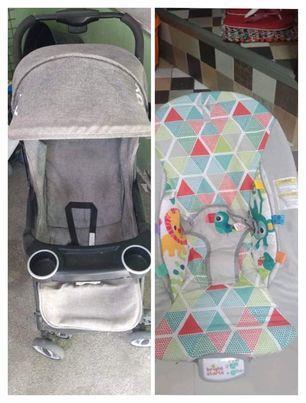
Figure 3. Time to Get Healthy!
Our participant claimed that since the start of her pregnancy, she started taking care of herself. She always takes her medication, as well as drinking a lot of water and avoids foods that are high in sodium because the doctor told her that she has UTI. She stated that at first, she didn’t want the taste of her medicine (folic acid), nonetheless, still she got used to it, later on, for it is not just only for herself but also for her baby. She said that she can relate those pictures with her pregnancy. When she is seven months pregnant, there are a lot of changes. At first, she had a hard time adjusting, like having morning sickness, or sometimes she had some trouble sleeping or there are times that she got headaches. However, despite those struggles, she surpassed it, and she will now hold and see her baby, claiming that everything is worth it.


International Journal of Healthcare Sciences ISSN 2348-5728 (Online)
Vol. 10, Issue 2, pp: (57-76), Month: October 2022 - March 2023, Available at: www.researchpublish.com
Figure 4. Family; My Greatest Blessing
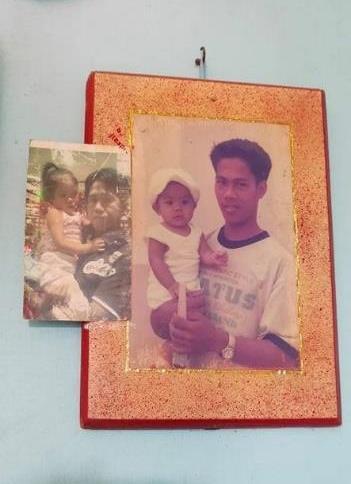
The participant expresses her feelings about this picture. She said that she is happy and excited because her family is one of her greatest blessings. Despite what happened her family supported and guided her. The participant also said that her family always told her that soon, she will be the one on the picture frame caring and holding her baby. She promises that she will be a good mother and will have a responsibility not only for herself but also to her child. She knows that sooner or later; she can finally touch and give all her baby’s needs. She will give all the love and care just like how her family treats her.
Figure 5. Man’s Best Friend

This dog helps our participant to be ready. As a soon to be mother, she will make milk for her baby, just like how she makes milk for her dog. She is joyful because the dog always touches the tummy of our participant. She expressed her feeling of comfort when the dog touches her and the baby always kicks. She also said that it feels like the baby is excited to see her beloved dogs, the same way her dogs are also thrilled to see the baby.
Participant 2 (Teresa)
Figure 6. One of my sources during Pregnancy
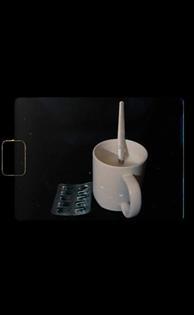
International Journal of Healthcare Sciences ISSN 2348-5728 (Online)
Vol. 10, Issue 2, pp: (57-76), Month: October 2022 - March 2023, Available at: www.researchpublish.com
The participant expressed how worried she was when she took the photo because she found out late that she was pregnant. She was bothered because she didn’t know what the outcomes were and if her baby was safe. The participant entitled the picture Figure 1: One of my sources during Pregnancy. Milk and vitamins. We all know that they are parts of the pregnant diet and they play an important role in the health of the pregnant mother and the baby. She controls and limits herself in choosing foods to eat. She also takes a lot of rest because, according to her, she cannot avoid the stress, especially when she and her family found out that she is pregnant at an early age.
Figure 7,8,9. Safe Place
The participant entitled those pictures above Figure 2-4: Safe Place. Since whenever she looks at the view like the sky, clouds, trees and ocean, she feels calm and relaxed. Like don't worry everything's going to be alright. She found out late that she was pregnant and there's a lot of time she needs to cope up with herself and her baby. There are many reasons why she is stressed out first in her online class, family, and in herself since there's a lot of changes but she admits that it was her fault that is why she makes adjustments in her everyday life. At first, she felt sad and disappointed since she is at an early age to have a child instead of enjoying her teenage life but now, she is happy and she accepted it whole heartedly because that's a blessing from the Lord.
 Participant 3 (Leonora)
Participant 3 (Leonora)
Figure 10. Chance to Glance


One of the most exciting parts of being pregnant is the first ultrasound where they get to see their baby for the first time, even if it is still in the mother’s womb. This photo gives a lot of emotion to the participant. First, she’s not aware of her pregnancy because she stated that her menstrual period is irregular. Second, the doctor informed her that her baby was in breechposition. Andlastly, sheneedstoestablisha newroutinefor herbaby’s health,like whenitcomestofood, medication to take, and things she needs to do.
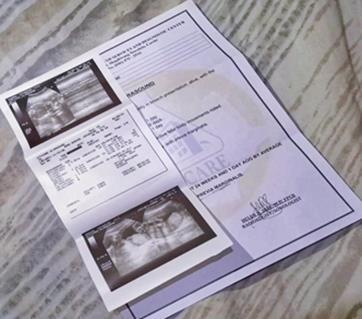
International Journal of Healthcare Sciences ISSN 2348-5728 (Online)
Vol. 10, Issue 2, pp: (57-76), Month: October 2022 - March 2023, Available at: www.researchpublish.com
Figure 11. To obey, for a baby
Being pregnant is not easy. You will have a list of do's and don’ts that you need to follow. The participant shared this photo after her laboratory check-up. She expressed that the doctor informed her that she had a UTI (Urinary Tract Infection) and gave her antibiotic medication. As she stated, she follows what the doctor said, like drinking the medication and drinking lots of water as for the sake of the baby's health as well.
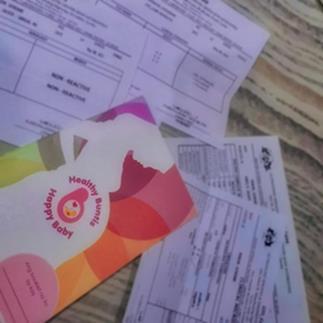
Figure 12. Image of Awareness
At first, she had no idea, but every single day she was able to overcome it. The participant expressed that every time she looks at the mirror, she has a realization and an imagination about giving birth. She realizes that the feeling is different when you’re having a baby and that a lot of things will change because she’s not alone anymore.


Figure 13. Readiness for Success
As verbalized by the participant, at her age she should be studying and preparing for her own future. However, because of her pregnancy as she will become a mother soon, she needs to be prepared. She’s having mixed emotions because she’s still a student but is also turning into a mother who has a lot of responsibilities.
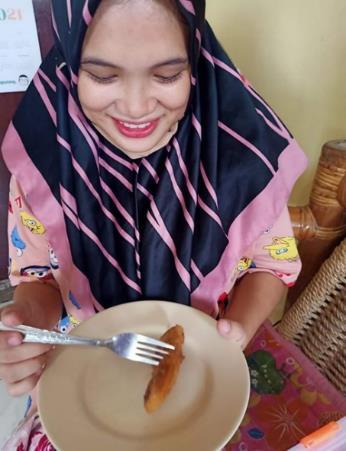
Figure 14. Dreams
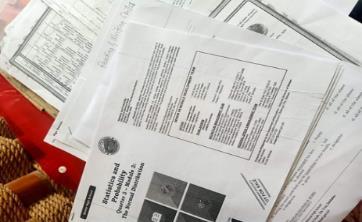
The participant expressed that even though she got pregnant at an early age, she still chooses to continue her study even though she is experiencing more hardships than the others because of her condition. The pressure on different subjects to complete her modules at a givendeadline are there but she said that her babywas one of the reasons why she was so inspired to pursue and finished her study. On figure 1, the participant captured the picture she entitled: Dreams. Since she is near her due date, she compared her pregnancy to her studies. She still has no clue about being a mother in the near future. She feels mixed emotions like excitement, anxietyand fear for the new chapter of her life. She also stated that because of the guidance of Allah, together with her husband, the Midwife at Barangay health centers and Barangay Health Workers, she believes her baby will be healthy because of the utmost care, love and support given to her. During this point in time, she dreams to be a great mother even though she's still a teenager.
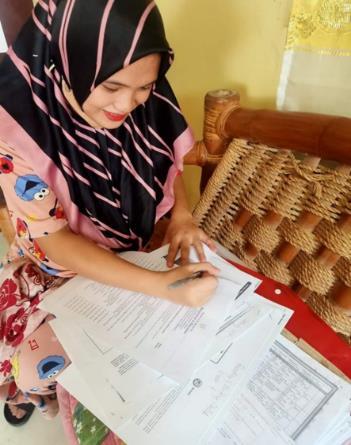
Figure 15. A Slice of Hope

The participant expressed that at the earlystage of her pregnancy, she experienced difficulties like having morning sickness Given that their religion is Muslim wherein they cannot eat pork, her nutrition or health was one of her worries, ever since as she values the health of her baby. During one of her prenatal check-ups at the barangay health center she learned the importance of proper nutrition during pregnancy, including what food she can eat without disobeying the rules of her religion, the foods she needs to avoid, as well as the and the big part of drinking water for her baby to be healthy. She captured this picture entitled: A Slice of Hope, during one of her merienda times: her favorite snacks, turon and pure buko juice. She stated that she learned in the prenatal check-up that bananas are rich in potassium and they also contain B6, Vitamin C and fiber which are good for pregnancy. With this, she hopes that the nutritious food that she eats will make the baby in her womb healthy.

Vol. 10, Issue 2, pp: (57-76), Month: October 2022 - March 2023, Available at: www.researchpublish.com
Figure 16. Picture Puzzle
This picture was given by the participant titled: Picture Puzzle. Like a piece in the puzzle picture, the participant correlates this about her pregnancy in the preparation for the things that she needed for her upcoming baby. She joyfully told us that as much as possible she saved a portion of their everyday sales from the store, maybe 50- or 20-peso bills. With the money that they were able to save, she bought things needed for her baby and her delivery. She's excited as she bought piece by piece at a time and able to almost complete the things that she needed before the month of her expected date of delivery.

Figure 17. A Glimpse of Future
When the participant had her first ultrasound, she immediately took a picture and chose to share it to the researcher. The joy that she feels is extraordinary as she now has the first picture of her baby. Even though she cannot see the baby clearly on the ultrasound, the idea that there is a heart beating inside of her womb made her realize that this ultrasound is the glimpse of her future. It is clear proof that she will become a mother soon. All of her worries about her pregnancy became futile because of the little picture itself. She feels a surge of excitement and joy and that she cannot describe and put into words. The happiness that she's feeling during this surreal moment is overflowing.
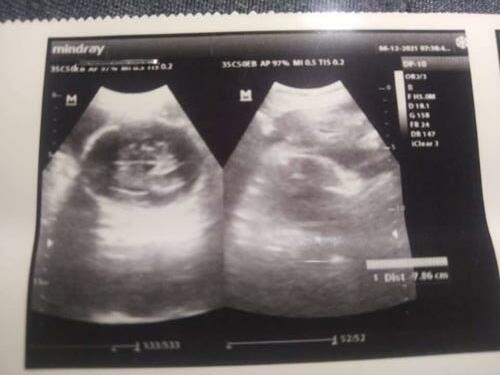
Figure 18. Modern Superhero
One of the most important parts of her journey during her pregnancy is the trips she made from her home to the health center. She said that she misses her mother the most, since she's been away from her family and their hometown, which is in Marawi, for a couple of months. She said that she feels at home when she's at the health center. Like what she feels from
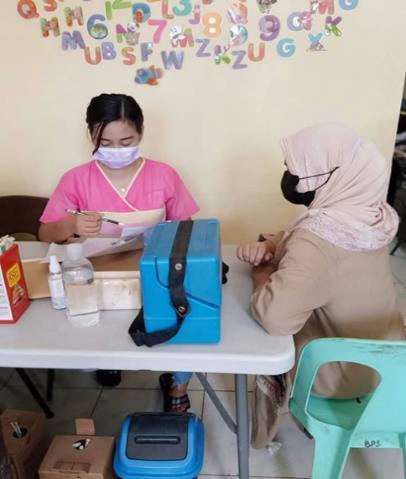
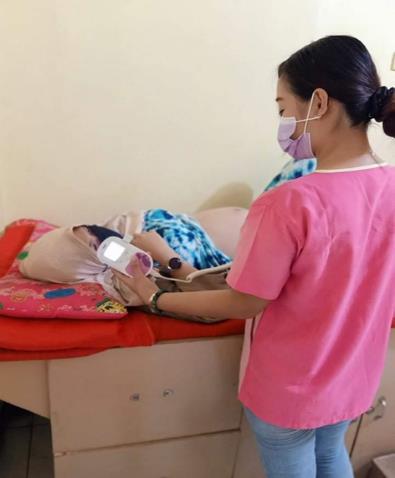
International Journal of Healthcare Sciences ISSN 2348-5728 (Online)
Vol. 10, Issue 2, pp: (57-76), Month: October 2022 - March 2023, Available at: www.researchpublish.com
her own mother, she felt the care, guidance and support at the health center. She enjoyed that she learned new things during her check -ups. Moreover, knowing that the baby is growing as it increases in fundal height, listening to its heartbeat and voicing her concerns about nutrition, vitamins, laboratories and most of all constructing her birth plan makes her happy. She cannot believe that all of these are only during pregnancy, what more when she finally becomes a mother? She also remembers her mother as she called her a superhero because, although she has many siblings, her mother almost do all the chores when it comes to them. She realizes the sacrifices and hard work of her mother and it inspires and drives her to become one, a modern superhero. One who will be selfless for the sake of her child in the future.
Struggle
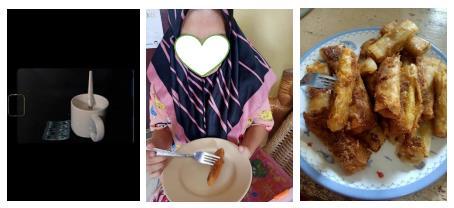
These pictures were categorized into struggle because it clearly shows the difficulties and obstacles they have to overcome for their baby. The participants revealed that at the different stages of their pregnancy they experience struggles and difficulties, in view of the fact that getting pregnant at an early age is not easy. They experienced struggles as they don’t have any idea or knowledge of what a pregnant woman goes through during their pregnancy. As such, they shared about the time they experienced taking medicines and drinking lots of fluids because of their UTIs and having the baby in breech position, and also struggled to plan their pregnancy and how to decide in terms of needs of her baby in the future. One of the participants also expressed that the demands of her pregnancy were great. She mentioned the difficulties of eating with restrictions and limitations as part of their cultures as Muslims. As we read each side of the participants, we can see how they’ve overcome all those struggles. Because it's not only the physical changes they have to experience but it also affects them emotionally and mentally aspect as they are not prepared with the constant bombardments of do's and don'ts and what if’s. But despite those obstacles, we can see how strong they are to handle those challenges and realize that being a pregnant teenager and a future mother is not easy. It’s a big responsibility.

Nature, skies, ultrasounds and others. These are the images that gave them hope. Seeing this of kinds views makes them relaxed, at peace and calms their minds. While seeing their baby through an ultrasound gives them mixed emotions. Despite the difficulties and stressful effects of getting pregnant at an early age, they have got to look on the brighter side and hope for a better future ahead. The participants also expressed that, in spite of the difficulties that they went through during their pregnancy, they believe and hope that there’s something beautiful at the end of their journey as a pregnant teenager to becoming a wonderful and responsible mother in the near future.
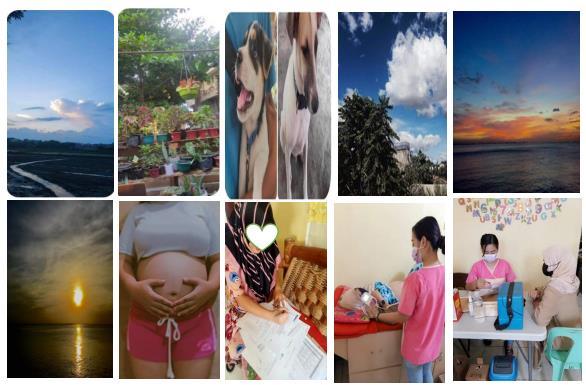
Success
Based on the pictures that the participant sent, she expressed that in life you will face a lot of unexpected challenges that will make you stronger and more successful in any situation. But as a young mother who keeps fighting for themselves and for their baby to be in a good situation, it is a success they can show to others with confidence. As a teenager, building a family is not easy. You need to be prepared for everything and life was not all about struggles and difficulties as pregnant

International Journal of Healthcare Sciences ISSN 2348-5728 (Online)
Vol. 10, Issue 2, pp: (57-76), Month: October 2022 - March 2023, Available at: www.researchpublish.com
teenagers. There were times when they experienced little milestones in their journey as future mothers. Getting pregnant at an early age helps them to learn about themselves, their values, strengths, and what they are capable of. With this, they found their purpose, motivation, and inspiration. It was seen when one of the participants shared how she and her husband were able to buy their baby things every day from their small income. Another one was about how her father as a family supported her during her pregnancy and what moral support can do great things for a teenager.
IV. CONCLUSION AND RECOMMENDATION
Conclusion
First, the findings ofthis papersuggest that we have a support systembothprivate and public sectors for all teenage pregnant women but limited and exception in terms of free consultation to psychologists including the programs of DOH to maternal and child to implement to all teenage pregnant, have a free consultation, free medication and vitamins during pregnancy and have a free full package for delivery.
Second, Photovoice projects entail the opportunity for empowering participants. Future research using Photovoice should assess the influence it has on participants’ empowerment changes and how to sustain these individual and social changes. Teenage motherhood increased self-esteem and provided a sense of security and stability. Mothers had “grown up”, they had found an added impetus in their lives, and were planning or embarking upon further education and employment. Photovoice methods play a significant role in teenage pregnant participants in sharing their experiences and were able to show the statement of the problem by negative and positive effect of being a teenage of the respondents. It serves as an aid to address the psychological impact of teenage pregnancy as they are able to share experiences and get motivated by the current status of respondents.
Recommendation
First, to the research participants/teenage pregnant, the researchers recommend this kind of method in sharing their experiences during pregnancy, to reduce their pregnancy worries, fears, and stress. With this method they will be able to understand more (step by step) their situations and realize that in every struggle they will face, there’s always hope and success.
Second, for the parents of the pregnant teenager, with this study they will be able to understand and widen their knowledge about their daughter’s situation and experiences which are the struggle, hope, and success. With this study, they can guide their daughters in aspects more relatable to them as a parent and able to give all the needed help that the teenage pregnant needed during the course of their pregnancy.
Third, the doctors, nurses and midwives, the researchers recommend to have further study about assessment in teenage pregnant related to their psychological needs, and the use of psychological approach and therapeutic communication since they’re experiencing struggle, hope, and success.
Fourth, the Department Of Health (DOH) will continue the Maternal, Newborn, Child Health and Nutrition (MNCHN) comprehensive program for teenage pregnant women by; (1) hiring experts that include psychologists at the Local Government Units (LGUs), which will address the psychological needs for teenage pregnancy (2) establish a website open 24 hours a day as a hotline as an access point for online psychological services at the national level; (3) establish a Facebook page which will serve as peer group page for teenage pregnancy where they can share their situation and get feedback from other teenage pregnant; and (4) provide a full package of free delivery, for the continuous understanding of struggle, hope, and success of every teenage pregnant.
Fifth, A Guidance counselor can improve their understanding and awareness on how they will handle, advise, and address the pregnant teenager/students' concern in their situation, especially in a school setting.
Sixth, Mary Chiles, especially the nursing and midwiferydepartment, the photovoice method may be suggested as a helpful method which can be utilized by the RLE in catering to teenage pregnancy.
Lastly, Future researchers, this will help and guide them to improve the use of photovoice methods in assessing the experiences of teenagers during the whole pregnancy journey and influence on participants’ empowerment changes and how to sustain these individual and social changes.
International Journal of Healthcare Sciences ISSN 2348-5728 (Online)
Vol. 10, Issue 2, pp: (57-76), Month: October 2022 - March 2023, Available at: www.researchpublish.com
REFERENCES
[1] Akella, D. & Jordan, M. (2015). Impact of Social and Cultural Factors on Teen Pregnancy. Retrieved from: https://digitalscholarship.unlv.edu/cgi/viewcontent.cgi?article=1332&context=jhdrp
[2] All Answers Ltd. (November 2018). Teenage Pregnancy Study in the Philippines. Retrieved from https://nursinganswers.net/essays/teenage-pregnancy-study-philippines-4836.php?vref=1
[3] Alvarez, M.O.C., Rosario, A.B., Salvador, J.T., & Sauce, B.R.J. (2016). The Phenomenon of Teenage Pregnancy in the Philippines. Retrieved from: https://core.ac.uk/download/pdf/236412741.pdf
[4] Aminshokravi, F. & Moridi, M. (2018). "Ambivalence Perception" the Consequence of Exposure to Pregnancy in Iranian Adolescent Women: A Qualitative Study. Retrieved from: https://www.researchgate.net/publication/ 8192265_Positive_experiences_of_teenage_motherhood_A_qualitative_study#:~:text=Many%20young%20mothers %20felt%20they,and%20who%20loved%20them%20back
[5] Amos, S., Cobb, M., Pabani, N., & Read, K. (2012). Facilitating a Photovoice Project: What you need to know. Retrieved from: https://foodarc.ca/makefoodmatter/wpcontent/uploads/sites/3/VOICES_PhotovoiceManual.pdf
[6] Bersales, L.G. (2018). Births in the Philippines, 2017. Retrieved from: https://psa.gov.ph/content/births-philippines2017
[7] Bute, J., Chumber, N., Huff, A., & O’Brien, C. (2015). Building a “Better Life”: The Transformative Effects of Adolescent Pregnancy and Parenting. https://journals.sagepub.com/doi/full/10.1177/2158244015571638#:~:text= Contrary%20to%20the%20predominantly%20negative,being%20proud%20of%20their%20accomplishments%2C
[8] Developmental Task of Adolescence. Retrieved from: http://www.wvdhhr.org/bph/modules/man/manres3. htm#:~:text=To%20explore%20attitudes%20toward%20family,based%20on%20what%20is%20important
[9] Developmental Tasks of Normal Adolescence. Retrieved from: https://ccoso.org/sites/default/files/import/ Developmental-Tasks-of-Normal-Adolescence.htm
[10] Domocmat, M.C., Oniashvili, S., & Rosario, A. (2016). Still a Teen, already a Mother: Understanding the Teen Motherhood Phenomenon through Photovoice. Retrieved from: https://www.researchgate.net/publication/34234 4402Still_a_Teen_Already_a_Mother_Understanding_the_Teen_Motherhood_Phenomenon_Through_Photovoice
[11] Garcia, C. (2018). Photovoice: Method Experiment Research with Adolescent Mothers. Retrieved from: https://www.scielo.br/scielo.php?script=sci_arttext&pid=S141481452018000300701
[12] Govender, D., Naidoo, S. & Taylor, M. (2020). “I have to provide for another life emotionally, physically and financially”: understanding pregnancy, motherhood and the future aspirations of adolescent mothers in KwaZuluNatal South, Africa. BMC Pregnancy Childbirth 20, 620. Retrieved from: https://doi.org/10.1186/s12884-020-033197
[13] Harley, A. (2012). Power, Ethics, and Politics in using Photovoice. Retrieved from: https://www.researchgate.net/ publication/284715269_Power_ethics_and_politics_in_using_photovoice
[14] Kirchengast, S. (2016).Teenage Pregnancies: AWorldwide Social and Medical Problem. Retrived from: https://www. intechopen.com/chapters/52475
[15] Nall, R. (2016). What are the effects of Teenage Pregnancy? Retrieved from: https://www.healthline. com/health/pregnancy/teenage-pregnancy-effects
[16] Pflugradt, S. (2019). What Are the Causes of Teenage Pregnancy?. Retrieved from: https://howtoadult.com/what-arethe-causes-of-teenage-pregnancy-4491351.html
[17] Photovoice. (2017). Statement of Ethical Practice. Retrieved from: https://photovoice.org/wp-content/uploads/2017/ 05/Ethical-Statement.pdf
[18] Positive and Negative Effects of Teenage Pregnancy. (2017). Retrieved from: https://www.positivenegativeeffects. com/teenage-pregnancy
International Journal of Healthcare Sciences ISSN 2348-5728 (Online)
Vol. 10, Issue 2, pp: (57-76), Month: October 2022 - March 2023, Available at: www.researchpublish.com
[19] UNFPA. (2020). Eliminating Teenage Pregnancy in the Philippines. Retrieved from: https://philippines.unfpa.org/ sites/default/files/pubpdf/UNFPA_Policy_Brief_Teenage_Pregnancy_%282020-01-24%29.pdf
[20] Watson, S. (2018). Healthline: What’s the childbearing age?. Retrieved from: https://www.healthline.com/health/ womens-health/childbearing-age
[21] WHO. (2020). Adolescent Pregnancy. Retrieved from: https://www.who.int/news-room/fact-sheets/detail/adolescentpregnancy
[22] Tulman, L., &Fawcett, J.(2003).Women’s HealthDuringand After Pregnancy. Retrieved from: https://books.google. com.ph/books?id=Z8afZBRBXqsC&printsec=copyright&redir_esc=y#v=onepage&q&f=false
[23] Zorilla, R.F. (2021). Negative Impacts of Teenage Pregnancy in the Philippines. Retrieved from: https://nnc.gov.ph/ regional-offices/mindanao/region-ix-zamboanga-peninsula/4931-negative-impacts-of-teenage-pregnancy-in-thephilippine
